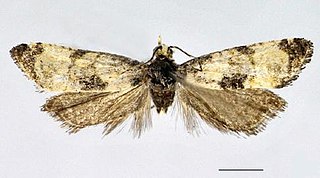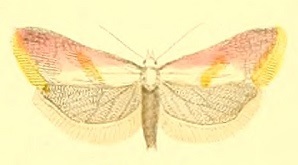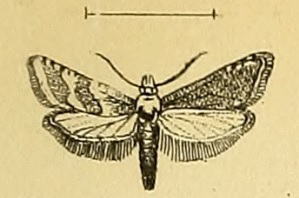
Cochylis nana is a moth of the family Tortricidae. It was described by Adrian Hardy Haworth in 1811. It is found in Europe, Amur Oblast of Russia and Nova Scotia in Canada.

Cochylis is a genus of moths belonging to the subfamily Tortricinae of the family Tortricidae.

Cochylimorpha is a genus of moths of the family Tortricidae.

Cochylis hybridella is a moth species of the family Tortricidae. It is found in most of Europe, the Near East, China, Japan, Korea and Russia.

Cochylis roseana is a moth of the family Tortricidae. It is found in most of Europe, Uralsk, Iran, Asia Minor and China (Gansu).

Cochylis molliculana is a moth of the family Tortricidae.

Cochylichroa atricapitana, the black-headed conch, is a moth of the family Tortricidae. It is found in China (Xinjiang) and the eastern Palearctic and most of Europe.

Cochylis dubitana, the little conch, is a moth of the family Tortricidae. It is found in China (Heilongjiang) and most of Europe. and the Caucasus. It is also found in North America, where it has been recorded from Colorado, Maine, Ontario and Washington.

Cochylis posterana is a moth of the family Tortricidae. It is found in Europe, Iran and China.

Cochylis flaviciliana, the gold-fringed conch, is a moth of the family Tortricidae. It was described by Westwood in 1854. It is found in most of Europe and north-western Africa. The habitat consists of chalky grasslands.
Cochylis aestiva is a species of moth of the family Tortricidae. It is found in northern Syria.

Cochylis defessana is a species of moth of the family Tortricidae. It is found in Bulgaria, Romania, Greece, China (Xinjiang), Iran and Turkey.
Cochylis piana is a species of moth of the family Tortricidae. It is found in Mongolia, China, Kazakhstan, Tajikistan, Uzbekistan, Kyrgyzstan, Afghanistan, Iran and Russia.
Cochylis psychrasema is a species of moth of the family Tortricidae. It is found in China.

Cochylis epilinana is a species of moth of the family Tortricidae. It is found in most of Europe, Asia Minor, Israel and northern Syria.

Cochylis salebrana is a species of moth of the family Tortricidae. It is found on Sardinia and Sicily and in Portugal, Spain, France, Italy, Romania, Bulgaria, Hungary, North Macedonia and Asia Minor and Daghestan.
Cochylis campuloclinium is a species of moth of the family Tortricidae. It is found in Argentina.
Cochylis disputabilis is a species of moth of the family Tortricidae. It is found in Guerrero, Mexico.
Cochylis yinyangana is a species of moth of the family Tortricidae. It is only known from the White Sands National Park in Otero County, New Mexico and at Carlsbad Caverns National Park in Eddy County, also in New Mexico.

Cochylis ringsi, Rings' cochylid moth, is a species of moth of the family Tortricidae. It is found in the United States, where it has been recorded from Iowa and Texas to Maryland and Florida.













